Fall 2022
Together, We Can Stop Bullying
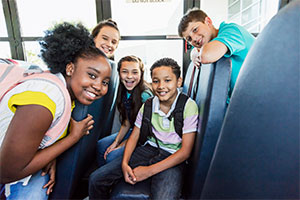 When families, schools and communities work together, it’s possible to stop bullying. But first, we must understand it.
When families, schools and communities work together, it’s possible to stop bullying. But first, we must understand it.
Bullying is unwanted, aggressive behavior that includes an imbalance of power. That is, the child who bullies uses some form of power to control or harm the child they are bullying. And bullying is a repeated behavior — or one that has the potential to be repeated over time.
There are four types of bullying: physical, verbal, social and cyberbullying. Physical bullying includes attacking someone (hitting, shoving, poking) or using body motions or facial expressions (clenching fists, pointing, glaring) to suggest an attack may happen. Verbal bullying includes threatening, taunting, teasing and name-calling. Social bullying often involves purposely excluding someone from a group and encouraging others to do so. It includes gossip, humiliation and rumor-spreading.
Cyberbullying happens over digital devices like phones, computers and gaming consoles. It can occur through calls, texts, emails, personal messaging, chats, games and social media. It includes sending, posting or sharing any sort of negative content about someone else that embarrasses or humiliates them.
It’s important to understand the roles kids play in bullying. In addition to those who bully and those who are bullied, other children witness the behavior. Some kids assist the child doing the bullying. Others reinforce the bullying behavior by being a lively, loud audience. Some, known as outsiders, observe passively and appear neutral. And some kids actively defend the child being bullied and try to help them get out of the situation.
Bullying is upsetting and potentially harmful for all involved. It can cause serious, long-lasting problems for both those who are bullied and those who do the bullying.
It’s essential to talk regularly with your child about bullying. Ask open-ended questions about what they’ve seen or experienced themselves. Role-play scenarios so your child can practice how to prevent and safely stand up to bullying.
Parents and caregivers can be powerful anti-bullying role models. We can defend and assist those who need help, especially those who cannot fully help themselves. Simply by speaking out and acting in a kind and compassionate way, we can be sure our children see us building up others whenever possible. And grownups and kids alike can become activists in our schools and communities. Together, we can put an end to bullying.
Learn more about bullying.
Make a Home Fire Escape Plan
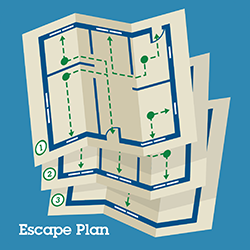 If there is ever a fire in your home, you may have only a few minutes to escape after a smoke alarm sounds. Every home needs working smoke alarms, and every family must have a home fire escape plan. Be sure there are smoke alarms in every sleeping room, outside of each sleeping area and on every level of your home.
If there is ever a fire in your home, you may have only a few minutes to escape after a smoke alarm sounds. Every home needs working smoke alarms, and every family must have a home fire escape plan. Be sure there are smoke alarms in every sleeping room, outside of each sleeping area and on every level of your home.
Your family also needs to make and practice an escape plan. Create a simple map of your home that includes all windows and doors, and then identify at least two ways out of each room. Also, agree on a safe meeting spot outside.
Use this checklist and worksheet to create your home fire escape plan. Learn more about fire safety for families, including families of children with special needs.
Room Share Rather than Bed Share
 Some parents choose to bed share with their babies. It may be done to make breastfeeding more convenient. Often, it’s simply what their family has always done with their babies. Not everyone is aware that bed sharing significantly raises the risk of sleep-related injury or death. The American Academy of Pediatrics recommends that parents sleep in the same room — but not in the same bed — as their baby for at least the first six months.
Some parents choose to bed share with their babies. It may be done to make breastfeeding more convenient. Often, it’s simply what their family has always done with their babies. Not everyone is aware that bed sharing significantly raises the risk of sleep-related injury or death. The American Academy of Pediatrics recommends that parents sleep in the same room — but not in the same bed — as their baby for at least the first six months.
Anytime babies are put down to sleep, they should be placed on their backs on a firm, flat sleep surface. The mattress must fit tightly in the crib or bassinet, with no gaps around the edges. Use only a fitted sheet on the mattress; nothing else should be in the sleep space. Following these guidelines reduces the chances of an infant suffocating or dying from sudden infant death syndrome (SIDS). Finally, be sure that any crib, bassinet, play yard or portable crib you use meets the U. S. Consumer Product Safety Commission’s current safety standards.
Read How to Keep Your Sleeping Baby Safe: AAP Policy Explained to learn more.
Talk with Kids About Risky ‘Challenges’
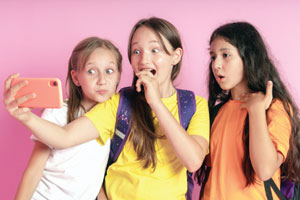 It’s important for parents and kids to talk about the dangers of viral ‘challenges’ that urge kids to try dangerous stunts. Some risky challenges involve ingesting things — such as biting into a liquid laundry pod or eating an intensely hot pepper. Other challenges dare kids to get high or faint — by taking several antihistamines, by hyperventilating or by having someone choke them. Some challenges push kids to steal items from school, such as the restroom soap dispenser or their teacher’s coffee cup. Other stealing challenges dare kids to shoplift a particular item from a grocery store. Not surprisingly, challenges are designed to create sensational social media. Kids are urged to video their stunts and share them online.
It’s important for parents and kids to talk about the dangers of viral ‘challenges’ that urge kids to try dangerous stunts. Some risky challenges involve ingesting things — such as biting into a liquid laundry pod or eating an intensely hot pepper. Other challenges dare kids to get high or faint — by taking several antihistamines, by hyperventilating or by having someone choke them. Some challenges push kids to steal items from school, such as the restroom soap dispenser or their teacher’s coffee cup. Other stealing challenges dare kids to shoplift a particular item from a grocery store. Not surprisingly, challenges are designed to create sensational social media. Kids are urged to video their stunts and share them online.
There’s a lot that’s wrong with these challenges. Kids have been seriously injured, suspended from school and even arrested and prosecuted. But because social media glamorizes these stunts, tweens and teens can be tempted to try them. They don’t always think through the risks or the consequences. Even stunts that seem silly and fun can result in injury. Kids are getting hurt from the duct tape challenge, whose goal is to escape after friends bind you up in the super-sticky, heavy-duty tape.
New challenges are popping up all the time, and even level-headed kids can get pulled in. These challenges are a great example of why a key goal of parenting is to help kids develop critical-thinking skills and sound judgment. Thoughtful conversations and positive role-modeling are powerful tools. When kids understand the risks and potential consequences, they can make wise decisions and avoid bad situations — even when you’re not with them.
Prevent Flu and COVID with Vaccines
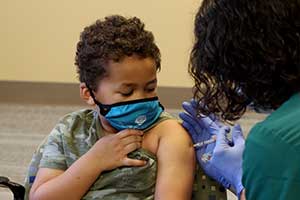 The annual flu vaccine is recommended for everyone age 6 months and older, with rare exceptions. Aim to get your child the flu vaccine by the end of October.
The annual flu vaccine is recommended for everyone age 6 months and older, with rare exceptions. Aim to get your child the flu vaccine by the end of October.
The COVID-19 vaccine is also recommended for everyone 6 months and older. Get the COVID vaccine for your child just as soon as they are eligible. It’s safe to get a flu vaccine, a COVID vaccine and other routine immunizations during the same medical visit. However, don’t put off a COVID vaccine so you can get it at the same time as a flu shot or another shot — get it as soon as possible.
Be sure to keep your child current with their COVID doses and all their routine vaccinations. Ask your child’s doctor if you have any questions about vaccines.
Learn more about preventing flu.
Warts
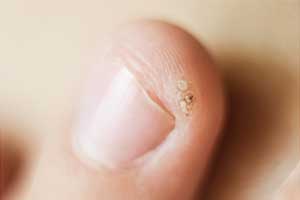 Warts are common, harmless skin growths caused by a virus. These raised, rough-surfaced bumps can appear on any part of the body — especially hands, feet and face.
Warts are common, harmless skin growths caused by a virus. These raised, rough-surfaced bumps can appear on any part of the body — especially hands, feet and face.
Warts are contagious and can be spread by touch. Keeping them covered can help prevent their spread. In young children, warts often go away on their own. Sometimes it’s difficult to get rid of warts for good. Liquid nitrogen and salicylic acid are two common treatments that destroy warts in the outer layer of skin where they grow. Other methods involve taping the wart or soaking the area in hot water.
If you have questions about warts, rashes or bumps, or how to treat them, ask your child’s doctor.
A Tasty Activity
 You can make your own healthy after-school or on-the-go snack mix with your school-age child. It’s simple, fun, and can save you money, too. Use unsalted nuts or seeds (pumpkin seeds are tasty and plentiful this time of year) plus unsweetened cereals and plain popcorn. For a bit of chewy sweetness, toss in a few raisins, craisins or dried cherries.
You can make your own healthy after-school or on-the-go snack mix with your school-age child. It’s simple, fun, and can save you money, too. Use unsalted nuts or seeds (pumpkin seeds are tasty and plentiful this time of year) plus unsweetened cereals and plain popcorn. For a bit of chewy sweetness, toss in a few raisins, craisins or dried cherries.
Invite your child to shop with you and choose the ingredients. This is a great way to practice reading food labels, paying special attention to added sugar and sodium. For extra fun, decorate the snack bags, name your mixes and share your recipe with friends. Important safety note: due to the choking risk, nuts and popcorn are not for kids under age 4.
Visit eatright.org for more snack and meal ideas and nutrition information for your family.
Quick Tip
On your child’s car seat, be sure the chest clip (also called a retainer clip) that holds the shoulder straps together is at armpit level.


